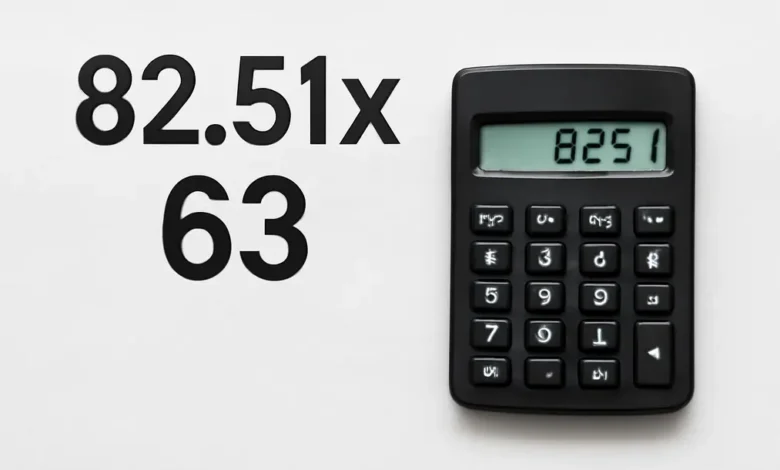Understanding the 82.51×63 Dimension: A Comprehensive Guide

When you hear the term 82.51×63, it might initially sound like a random set of numbers. However, in various industries such as printing, design, photography, or construction, these dimensions are far from arbitrary. This article will delve into what this specific dimension means, how it’s used in different fields, and why it’s important to understand its application. If you’re working with prints, designs, or measurements, this article will give you insights into the significance of 82.51×63 and how you can utilize it.
What Does “82.51×63” Mean?
The term 82.51×63 is a pair of numbers that likely represent dimensions, typically in millimeters, though it can also be in other units like inches depending on the context. These numbers usually denote the width and height or length of an object, product, or image.
- Width (82.51): This is the horizontal measurement of the object.
- Height (63): This is the vertical measurement.
So, when someone refers to 82.51×63, they are describing an object or item that is 82.51 millimeters wide and 63 millimeters tall. In some cases, these numbers might appear in the context of a specific product, like a framed print, a small display, or a device.
Common Applications of “82.51×63” in Various Industries
1. Printing and Graphic Design
In the world of printing and graphic design, dimensions like 82.51×63 are crucial for determining the size of printed materials. For example, an image or design intended for a brochure, flyer, or business card might require precise measurements.
- Print size: When setting up your print file in a design software, you may need to adjust your document’s size to match 82.51×63. This ensures that the final printed product fits perfectly within the specified dimensions.
- Design layout: Designers often work with specific dimensions to ensure the layout works within the confines of the material. In this case, 82.51×63 could be the size of a printed poster, label, or a small sign.
For a designer, getting the size correct is crucial because even a slight miscalculation can lead to cropping or scaling issues, which may ruin the aesthetics of the design.
2. Photography and Framing
Photographers also deal with specific dimensions when printing photos or creating prints for frames. If you have a photograph with dimensions of 82.51×63 in millimeters, it might refer to the print size of the photograph you are preparing for display.
- Custom framing: Picture frames are often designed to fit specific sizes. If you have a photo or artwork that measures 82.51×63, finding a frame that fits this exact dimension can be challenging. That’s where custom framing comes into play, offering a frame that perfectly matches the unique size.
- Image cropping: When you plan to print an image at this size, cropping it correctly becomes important to maintain the image’s integrity. If you don’t crop the image well, you risk losing important elements or having unnecessary white space.
3. Packaging Industry
The packaging industry often uses precise measurements when designing packaging for products. 82.51×63 could be the size of a box, label, or product packaging. This ensures that the product fits snugly inside the packaging and is visually appealing.
- Product packaging design: Packaging design is essential for protecting the product and providing relevant product information. When packaging is made for an item with these dimensions, it’s crucial to consider the additional space for padding, branding, and information.
- Shipping considerations: Understanding the exact dimensions of packaging helps in determining shipping costs, as carriers often charge based on package size. A well-designed package using the 82.51×63 dimension would help businesses avoid excessive shipping fees.
4. Construction and Architecture
In construction or architecture, dimensions like 82.51×63 could refer to a part of a building or a component of a structure. For instance, it might describe the size of a window, a wall panel, or even an architectural element in a blueprint.
- Windows and doors: Builders often need to work with precise measurements for window and door installations. The dimensions 82.51×63 could refer to a small window frame, where these numbers represent the width and height of the frame.
- Design consistency: In construction, maintaining standard dimensions across multiple elements of the project helps in ensuring uniformity and a seamless design. Using exact dimensions like 82.51×63 ensures that the project fits together as planned.
Why Exact Dimensions Matter in Various Fields
The importance of precision in measurements, like 82.51×63, cannot be overstated. When working in any industry that requires sizing – be it printing, photography, packaging, or construction – getting the numbers right is essential for a successful outcome.
- Accuracy: In design, printing, or construction, every small detail counts. If your measurements are even slightly off, the end result might not look as expected. For example, printing an image with incorrect dimensions can lead to stretching, pixelation, or important details being cut off. Similarly, incorrect packaging sizes can lead to inefficiencies or damaged goods.
- Efficiency: Working with standard or specific dimensions helps streamline processes. Whether it’s producing a print or building a structure, knowing the exact measurements reduces the time spent correcting errors or redesigning components.
- Cost-Effectiveness: Miscalculations can lead to wasted resources. For example, in construction, incorrectly sized materials might need to be reordered, costing extra money and time. In design, wrong sizes can lead to reprints, increasing the overall cost of production.
The Importance of Understanding Custom Measurements
82.51×63 could be an example of a custom measurement or a non-standard size. While most measurements in industries tend to follow common standards, certain products or designs might require specialized sizes to stand out or fit specific needs.
- Customization: Custom measurements allow businesses or individuals to create unique products. If you’re designing a product or print with a custom size like 82.51×63, it ensures that the final result is one-of-a-kind, suited exactly to your requirements.
- Adaptability: Custom sizes allow for greater flexibility. Whether it’s a print design, a package, or a piece of construction material, adapting the measurements to suit your project ensures that you’re not forced to work with preset, generic sizes.
Conclusion: Why 82.51×63 Matters
While the dimension 82.51×63 might initially seem like a random set of numbers, it plays a crucial role in industries ranging from printing and photography to packaging and construction. Understanding the significance of these measurements helps professionals ensure that their projects turn out perfectly, whether it’s ensuring an image fits into a frame or creating packaging that protects and showcases a product.
From precision to customization, the value of working with accurate dimensions cannot be understated. So, whether you’re a designer, a photographer, or someone in construction, always remember the power of exact measurements – like 82.51×63 – and how they contribute to the final outcome.



